Texas is home to 4 venomous snake groups. Here's what to look out for when you see one
As scorching summer days turn into cooler summer nights, snakes, like people, choose to get out and about, making you more likely to come across one. If you see a snake, remember these tips experts recommend to keep everyone happy and healthy:
Most snakes are harmless, but watch out for these four venomous groups in Texas
More than 105 snake species or subspecies can be found in Texas, though these four groups are venomous and pose potential threats to human health, according to the Texas Parks and Wildlife Department.
Copperheads have light-colored bodies with reddish-brown circular bands. They tend to live in rocky areas and wooded bottomlands that have ample moisture. They grow to be about 2 feet long, and their bites don't normally kill humans because of their short fangs and minimal venom.
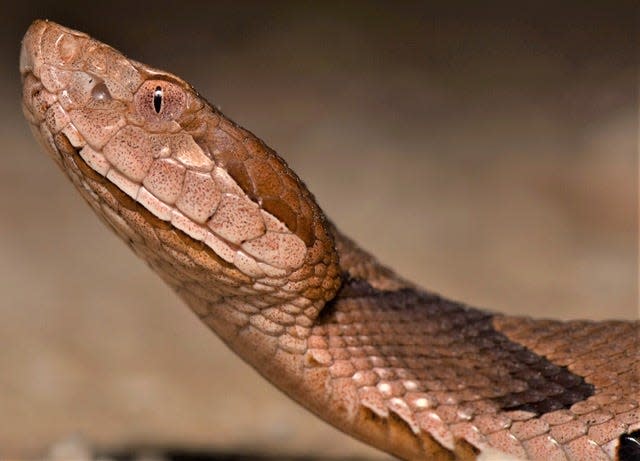
Coral snakes have red, yellow and black rings around their bodies, a color combination so popular that rhymes have been created to help people differentiate between species. "Red on yellow, kill a fellow; red on black, friend of Jack" — if the red and yellow rings touch each other, the snake is venomous, but you're fine if the red and black rings touch each other. They grow to about 2½ feet and live in woodlands and canyons. Their bites deliver one of the most lethal types of venom in North America.
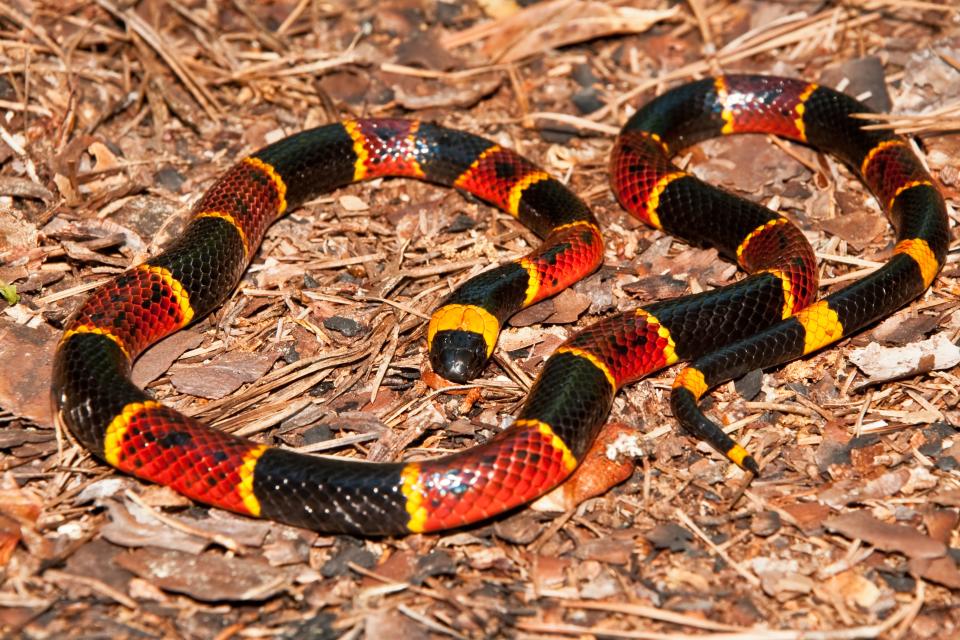
Cottonmouths, also known as water moccasins because they tend to live in swamps, lakes and rivers, are usually dark brown, olive green or black, with wide, dark bands along their bodies. They grow to about 3½ feet long. If threatened, cottonmouths will display white tissue inside their mouths, from which they get their name. Their bites account for 7% of all Texas snakebite cases.
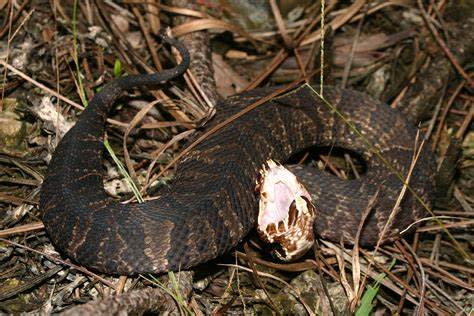
Rattlesnakes come in various forms, though you're most likely to encounter western diamondback rattlesnakes, which have brown bodies with dark brown, diamond-shaped markings down the middle of their backs and black and white alternating rings near their rattles. They grow to about 4 feet in length, but they can reach 7 feet. Western diamondback rattlesnakes are the most common venomous snake in Texas.
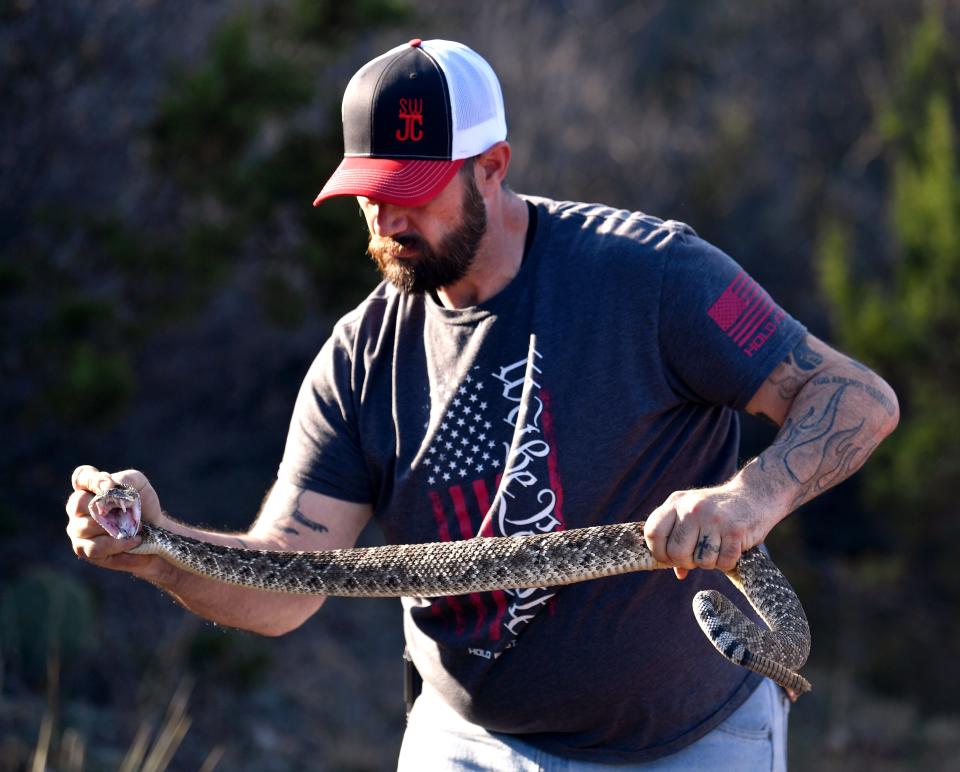
It's more dangerous to kill a snake than let it be
Snake experts urge people not to kill snakes — even venomous ones — for a variety of reasons. First, snakes serve valuable functions in several ecosystems, according to Living with Snakes, a snake advocacy group. They help prevent various diseases by eating insects and other carriers, and they also prey on rodents that cause damage to gardens and structures.
Second, most bites occur when people try to kill or eradicate snakes. Because snakes don't prey on humans and won't attack unless surprised or provoked, there's no reason to put yourself in harm's way by trying to kill one, experts say.
If a snake slithers across your path, or you walk into its path, freeze until you can decide how to avoid provoking it. Once you've decided your best path, slowly make your way in that direction. The snake will also probably retreat.
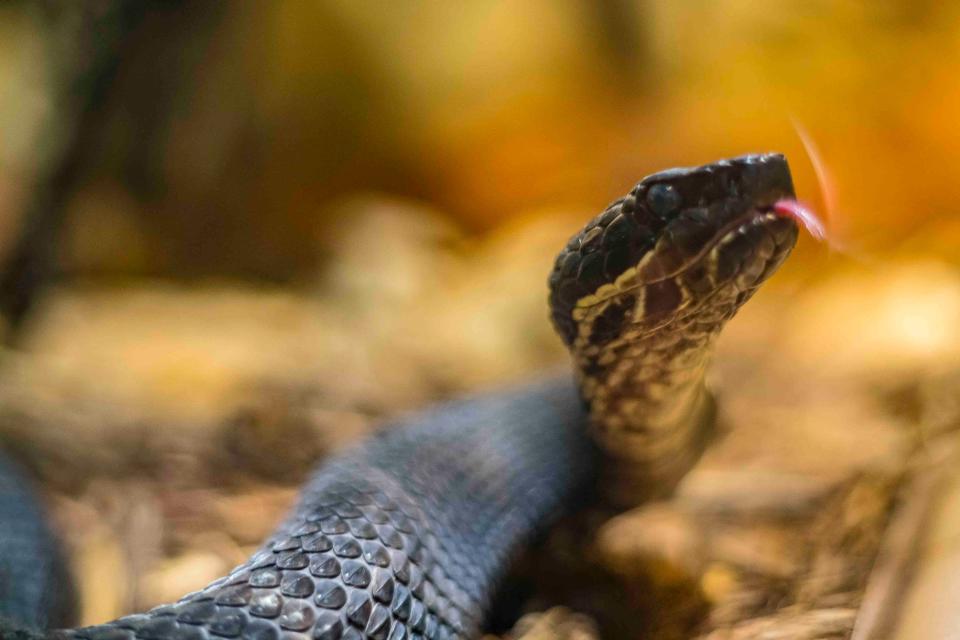
For homeowners who don't want snakes in their yard or near their house, Living with Snakes recommends not providing food or water to other wildlife and eliminating debris piles or anything else that could act as shelter.
Seek medical treatment if bitten by a venomous snake
If you are bitten by a venomous snake, Austin-Travis County EMS recommends several methods to try to keep the bite from becoming fatal.
Do not apply tourniquets to snakebites or attempt to “suck” the venom out.
If possible, take a picture or get a good description of the snake, but do not try to capture it.
Keep the injured area at or below the level of the heart.
Apply ice or cold packs to the injured area to help reduce swelling.
EMS also recommends contacting your doctor or calling the poison help line at 800-222-1222 for assistance. Call 911 immediately if the bite is obviously affecting your well-being, if you can't breathe or if you develop a full-body rash.
This article originally appeared on Austin American-Statesman: 4 types of venomous snakes in Texas and what to do if you're bitten

